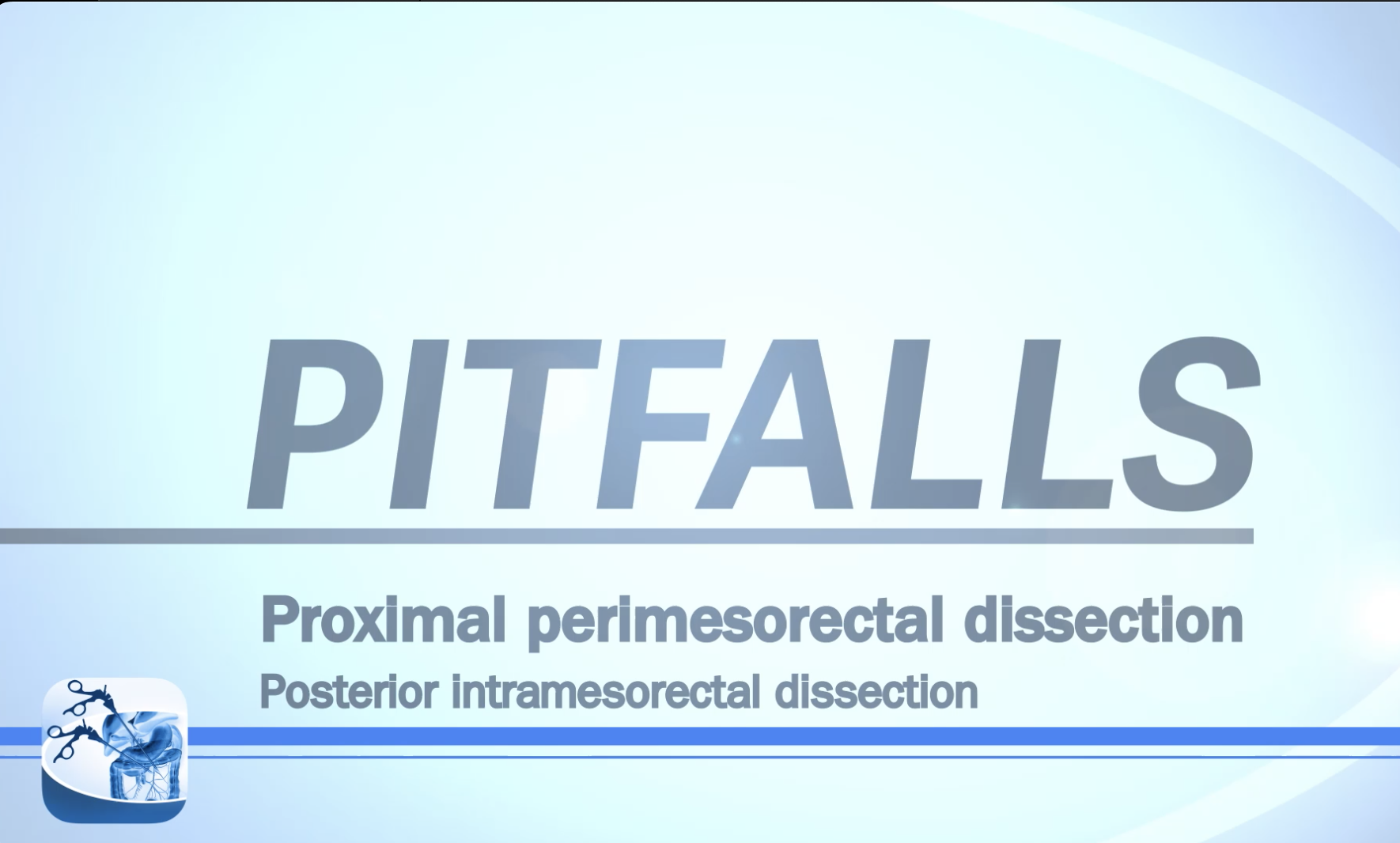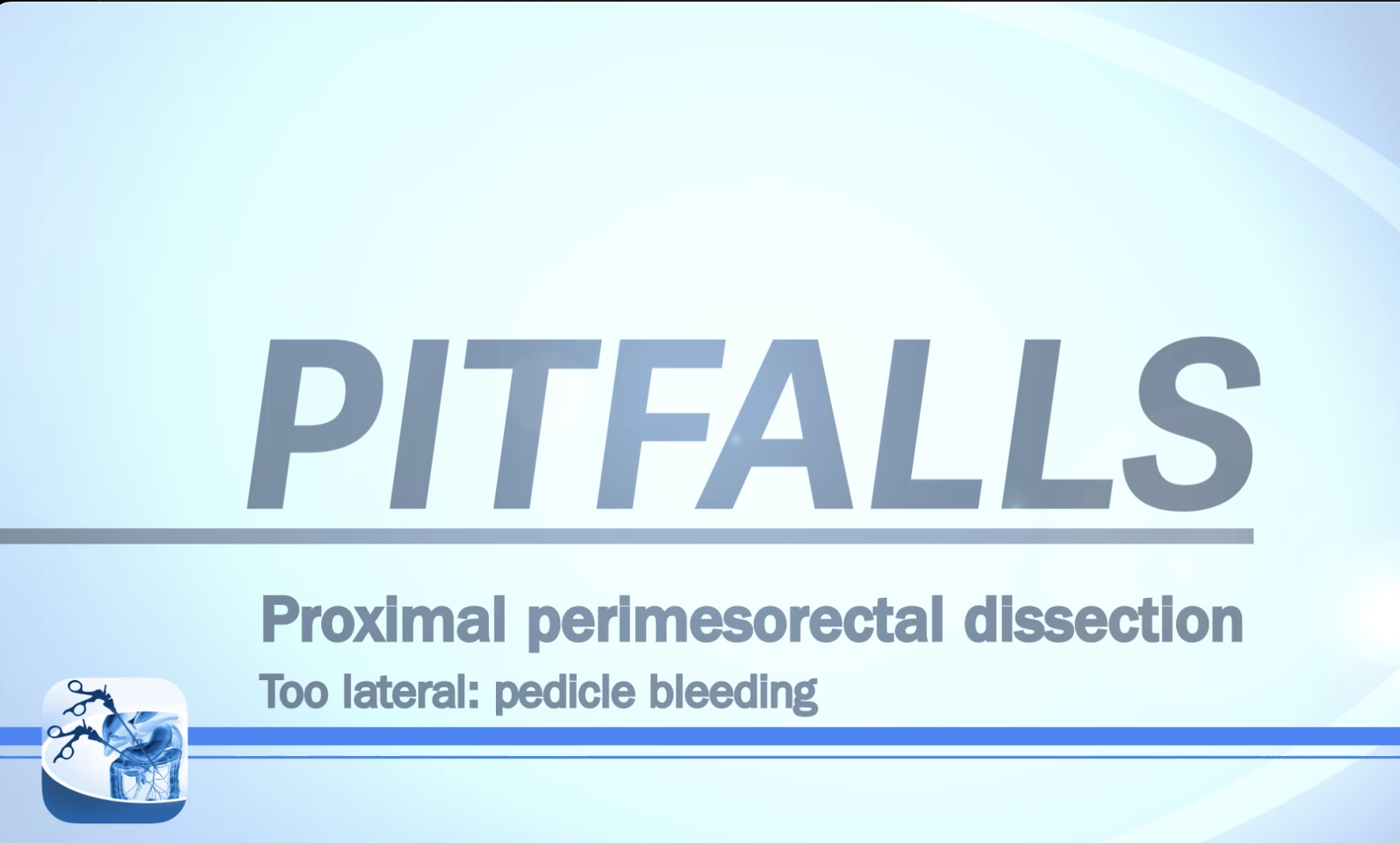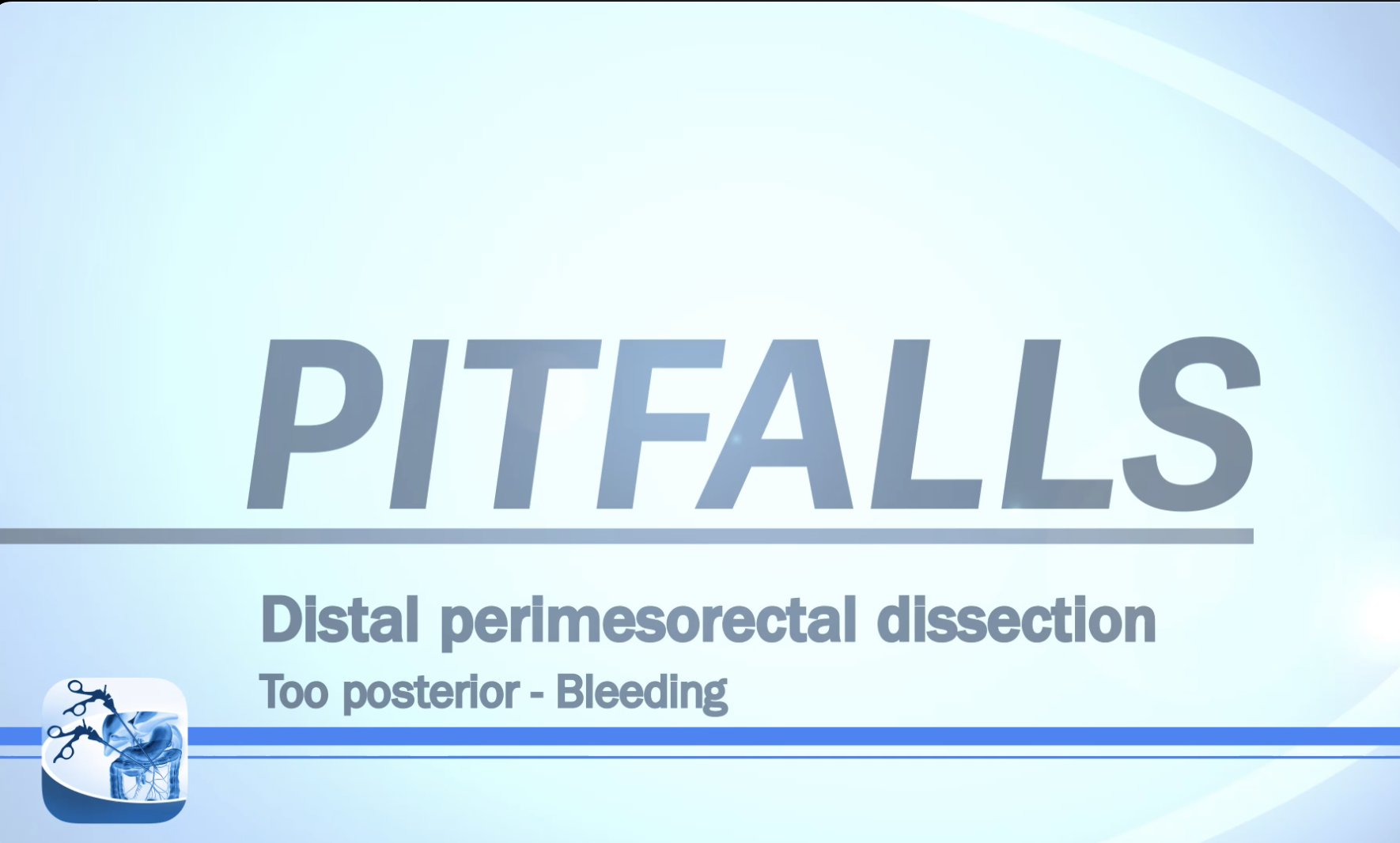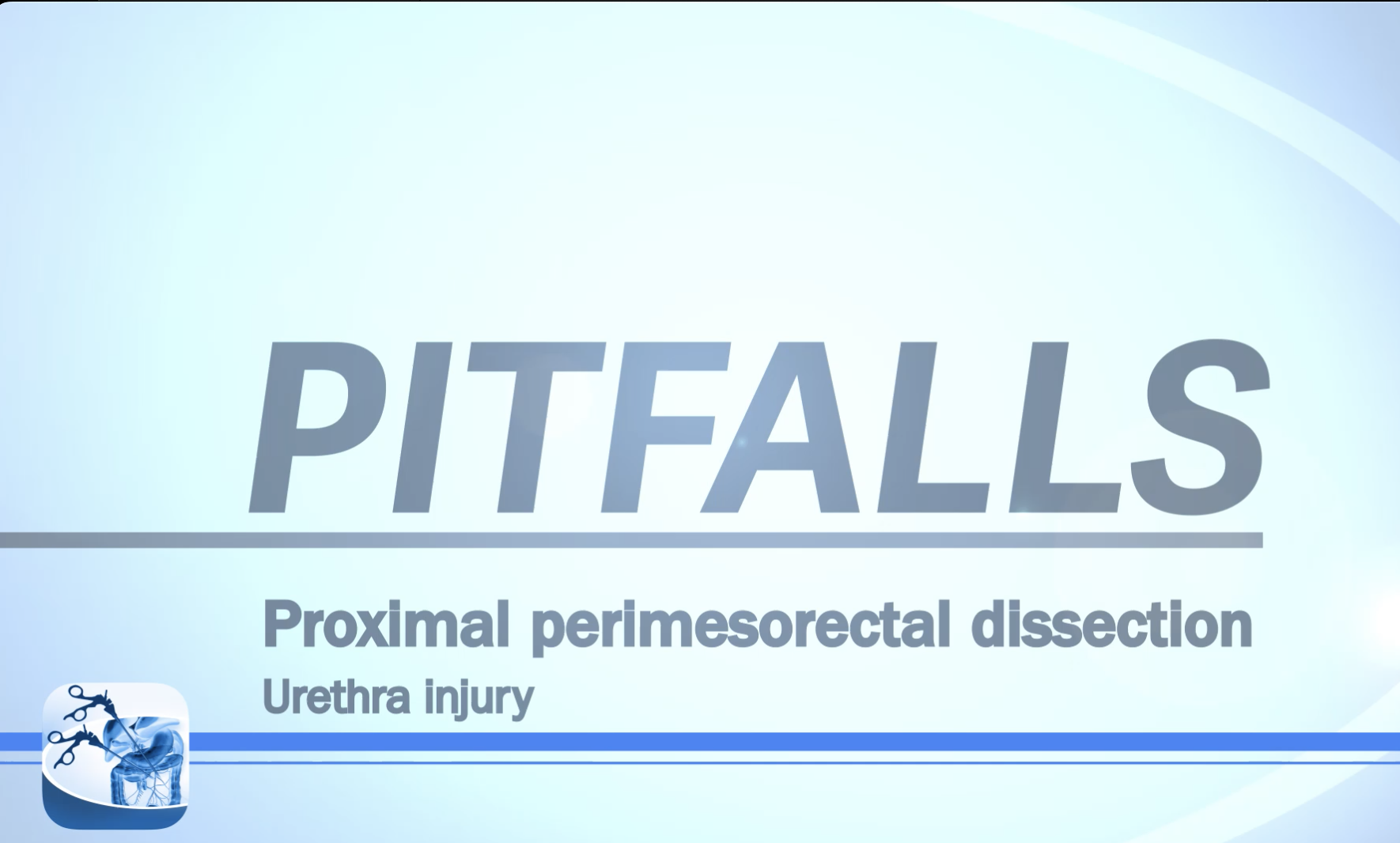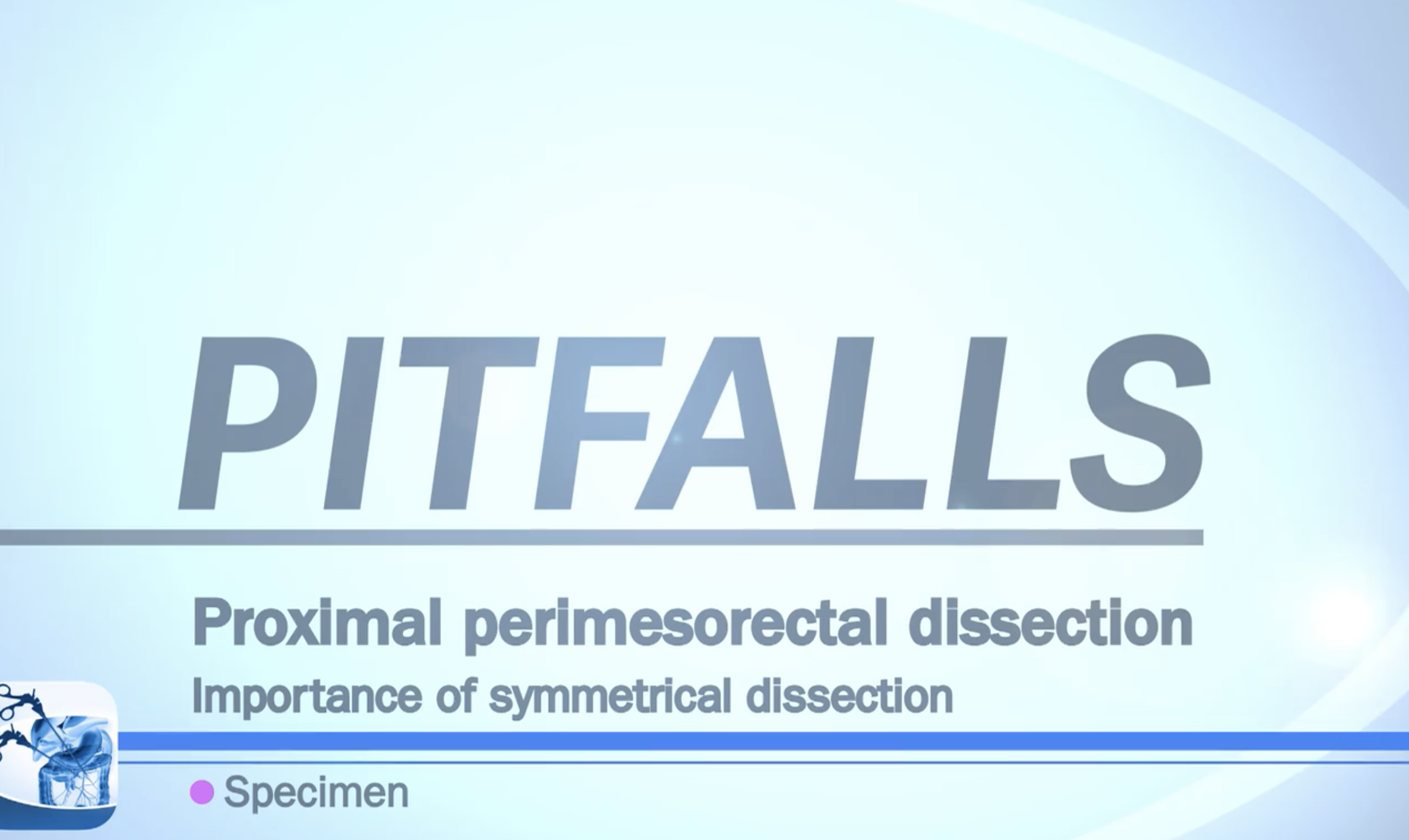Proximal perimesorectal dissection
Mathieu D’Hondt
Mohammed Abu Hilal
Proximal Dorsal plane
After the initial identification of the correct posterior plane, this is generally easy to follow when dissecting more proximally.
Of course at any time one must avoid dissecting into the presacral fascia, which can cause severe bleeding and also the connection with the previous abdominal dissection might be more difficult. Furthermore there is a risk of damaging the superior hypogastric plexus and nerves.
It is important not to create a narrow tunnel to work in and to keep a wide area of dissection following the contour of the posterior mesorectum (Bill Buttocks). Adding a gauze can help to lift up the specimen and avoids tearing the mesorectal fascia with instruments and excessive tension.
If the dorsal plane is followed up to S1/S2 the easy plane of dissection will stop. The reason for this is that the visceral and parietal fascia will fuse at that level. This is even more obvious in cadaver sessions where Waldeyer’s fascia is a very dense structure at that level. This is also the level where dissection of the abdominal and transanal portion can just miss each other by one layer. Preferably, the dissection above this point is done by the trans abdominal team.
Translumination will help to localise the right plane and re-entry point.
Proximal Anterior plane
At the level of the prostate, it’s important to localise Denonvillier’s fascia. Depending on the tumour location, the dissection can be done anterior or posterior to this fascia. If the anatomic plane is followed from below the dissection is done posterior to Denonvillier’s. In the case of an anteriorly locatedtumour, Denonvillier’s fascia has to be opened intentionally and the dissection continued anterior to it.
When opening the fascia the pneumorectum will create a halo/donut sign (circle in the fascia pushed open by the pressure of the pneumorectum).
When dissecting posterior to Denonvillier’s fascia the seminal vesicles will not be exposed. So this landmark is only visible when dissecting anterior of the fascia. We prefer the dorsal plane if oncologically feasible. The risk of damaging the nerves is reduced.
For opening of the peritoneum a two team approach is extremely helpful. Translumination will help localise the entry point.
Connecting both planes is preferably done at the 12 o’clock position to avoid blood dripping from the abdomen into the transanal area of dissection.
When both dissection planes are connected it’s important to equalize the pressure in the abdomen and transanally.
From the moment that the complete peritoneal reflection is opened the specimen can be pushed inside (or grasped by the abdominal team and pulled intra abdominal). Pushing the specimen upward and intra abdominal of course will only be feasible of the specimen is also completely dissected free on the dorsal and lateral side.
The TaTME-technique is much more a pushing technique than a pulling technique.
Proximal lateral plane
At every level, care must be taken not to dissect too lateral because the there is a high risk of damaging the inferior hypogastric plexus and nerves. Also the neurovascular bundles are located at around 2 and 10 o’clock so these are areas in which dissection has to be performed with utmost care.
Both teams can help each other by creating traction and counter-traction and as a result the dissection can be more efficient and precise. The team with the best view on a certain part of the operative field should have priority.
In General:
When certain areas are really difficult for one of the teams, they have to be patient, perform the dissection in a different part and wait for the other team to tackle the most difficult area/part together.
Proximal perimesorectal dissection
Attention for danger zones when performing the perimesorectal dissection:
- Avoid an intramesorectal dissection
- Avoid bleeding
- Avoid damage to the nerves
- Avoid damage to the urethra
- Try to work in a symmetrical way
Videos are used to illustrate these danger zones and although they are sometimes old and without using Airseal they are still very useful when early in the learning curve. We are very thankful to several early adaptors who were so kind to share these videos with us!
